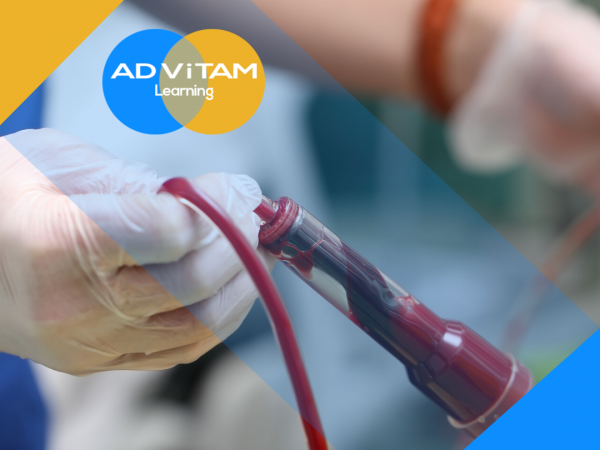Description
Care Certificate Standard 6 – Communication | Level 2 | Online Training Course | CPDUK Accredited | Instant Course Access | Includes Assessment & Certificate | Instant Certificate Download.
Welcome to our online Care Certificate Standard 6 (Communication) training course for front-line healthcare and social care support workers. All our online training courses, programmes and qualifications are accredited by the CPD Certification Service (CPDUK).
The online Care Certificate Standard 6 covers communication in health and social care settings. Communication is the act of conveying intended meanings from one entity or group to another through the use of mutually understood signs and semiotic rules.
It is essential for health and social care workers to understand the importance of effective communication. Excellent communication develops your knowledge and understanding about individuals and the part played by other workers so that the best care and support possible can be provided. It helps build working relationships where each person’s views are valued and taken into account.
Certificate duration: 2 years
Entry requirements: No entry restrictions
Recommended prerequisites: N/A
Assessment type: End of course assessment
Assessment pass mark – 80% needed to pass and gain a CPD certificate
Cost(s) of assessment and certification – All costs included in the course price
Awarding/Accrediting body – CPD Certification Service (CPDUK)
Who is the course for?
The online Care Certificate Standard 6 (Communication) training course was developed for new healthcare and social care staff as part of their workplace induction.
The primary audience of the Care Certificate is Healthcare Support Workers or Adult Social Care Workers. It is also suitable for existing health and social care staff who do not hold recognised qualifications.
Clinical support roles
The online Care Certificate Standard 6 (Communication) e-learning course is suitable for those giving support to clinical roles in the NHS and other healthcare settings where there is any direct contact with patients, including:
- Health Care Assistants,
- Care Support Workers, and
- Assistant Practitioners.
Adult social care workers
The online Care Certificate Standard 6 (Communication) training course is also suitable for those giving support in community settings, including:
- Adult Social Care workers in residential, nursing homes and hospices,
- Home care workers, and
- Domiciliary care staff.
What is covered in this course?
This online Care Certificate Standard 6 (Communication) training course covers the following:
- Introduction to Communication
- Types of communication
- Choosing appropriate methods of communication
- Successful communication
- Communication needs and preferences
- Key legislation and guidance
- Summary
- References and resources.
Course aims
This online Care Certificate Standard 6 (Communication) training course helps health and social care workers to understand their legal responsibilities to those they provide care.
Workers will develop many different relationships. Some will be formal and others more informal. Successful two-way communication is crucial in both cases. A relationship based on trust and understanding from the beginning will provide the basis for the excellent care and support, whether short or long-term.
Poor communication can quickly lead to confusion and distress. The process of exchanging information through communication is not always straightforward. If the information shared is inaccurate or misleading, mistakes can be made, which can result in poor care.
Learning objectives
By the end of this online Care Certificate Standard 6 (Communication) training course, you will be able to:
- Describe the different ways people communicate, how it affects relationships at work, and why we should observe and be receptive to an individual’s reactions when communicating with them.
- Describe how to establish an individual’s communication and language needs, wishes and preferences.
- List a range of communication methods and styles that could help meet an individual’s communication needs and preferences.
- Describe how to reduce barriers to communication and where to find support to help with effective communication.
Learning outcomes
On completion of this online Care Certificate Standard 6 (Communication) training course, the learner will be able to:
- Understand the importance of effective communication at work
- Describe the different ways that people communicate.
- Describe how communication affects relationships at work.
- Describe why it is essential to observe and be receptive to an individual’s reactions when communicating with them.
- Understand how to meet the communication and language needs, wishes and preferences of an individual
- Describe how to establish an individual’s communication and language needs, wishes and preferences.
- List a range of communication methods and styles that could help meet an individual’s communication needs, wishes and preferences.
- Understand how to promote effective communication
- List barriers to effective communication.
- Describe ways to reduce barriers to effective communication.
- Describe the process of effective communication between an individual and the HCSW/ASCW.
- Describe where to find information and support or services to help them communicate more effectively.
- Understand the principles and practices relating to confidentiality
- Describe what confidentiality means to their role.
- List any legislation and recognised working ways to maintain confidentiality in day-to-day communication.
- Describe situations where information, typically considered to be confidential, might need to be passed on.
- Describe who to ask for advice and support about confidentiality.
- Use appropriate verbal and nonverbal communication
- Demonstrate the use of appropriate verbal and non-verbal communication:
- Verbal:
- Tone
- Volume Non-verbal:
- Position or proximity,
- Eye contact,
- Body language,
- Touch,
- Signs and
- Symbols and pictures.
- Writing
- Objects of reference
- Verbal:
- Human and technical aids. Communication may take place:
- Face to face,
- By telephone or text,
- By email, internet or social networks, and
- By written reports or letters.
- Demonstrate the use of appropriate verbal and non-verbal communication:
- Support the use of appropriate communication aids and technologies
- Check that communication aids and technologies are:
- Clean,
- Working properly, and
- In good repair.
- Report any concerns about communication aid and technology to the appropriate person, including:
- The senior member of staff
- Carer, and
- Family member.
- Check that communication aids and technologies are:
What is involved in Communication?
The online Care Certificate Standard 6 covers communication in health and social care settings. Communication is the act of conveying intended meanings from one entity or group to another through the use of mutually understood signs and semiotic rules.
It is essential for health and social care workers to understand the importance of effective communication. Good communication develops your knowledge and understanding about individuals and the part played by other workers so that the best care and support possible can be provided. It helps build working relationships where each person’s views are valued and taken into account.
Communication is one of the 6 elements covered in the 6Cs. Communication is an essential part of a caring relationship and helps to encourage trusting relationships with other workers and families as well as the individuals you care for.
Why is this online Care Certificate Standard 6 training course important?
Health and social care professionals need good communication skills to develop positive relationships and share information with people using services. They also need to be able to communicate well with people’s families and/or carers and their colleagues and other professionals.
Types of communication
Talking is often seen as the most common method or type of communication, but most communication is silent. Gestures, tone of voice, grins, grimaces, shrugs, nods, moving away or closer, crossing arms and legs all tell us far more than words.
Learning to take account of these reactions is all part of developing your communication skills to achieve the best outcomes for individuals. Communication can be harder when we can’t see these signs such as when we use the phone, texts or email.








